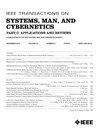基于高斯的边缘检测方法综述
IEEE Transactions on Systems Man and Cybernetics Part C-Applications and Re
Pub Date : 2002-08-01
DOI:10.1109/TSMCC.2002.804448
引用次数: 526
摘要
高斯滤波器在图像处理和计算机视觉领域得到了广泛的应用。我们讨论了该算子的各种特征,使其成为边缘检测领域的首选滤波器。尽管高斯滤波器具有这些令人满意的特性,但使用它的边缘检测算法仍然存在许多问题。我们回顾了几种基于高斯的线性和非线性边缘检测方法。本文章由计算机程序翻译,如有差异,请以英文原文为准。
Gaussian-based edge-detection methods - a survey
The Gaussian filter has been used extensively in image processing and computer vision for many years. We discuss the various features of this operator that make it the filter of choice in the area of edge detection. Despite these desirable features of the Gaussian filter, edge detection algorithms which use it suffer from many problems. We review several linear and nonlinear Gaussian-based edge detection methods.
求助全文
通过发布文献求助,成功后即可免费获取论文全文。
去求助
来源期刊
自引率
0.00%
发文量
1
审稿时长
3 months

 求助内容:
求助内容: 应助结果提醒方式:
应助结果提醒方式:


